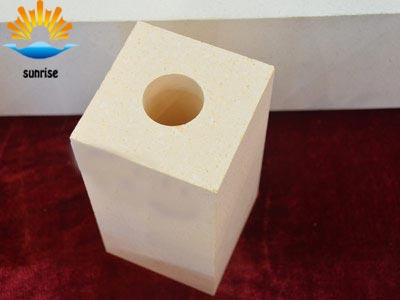Hot Product
Refractory Knowledge
Definition of insulation refractories
Date:2018-05-18 16:21 From:Zhengzhou Sunrise Refractory Author:admin
We all know that insulation refractories are a kind of building materials. Generally speaking, those that are not flammable, they can be fired in a timely manner, and they will not immediately burn. It is a new type of development that can prevent or delay the fire insulation material. Potential energy-efficient building materials.
Insulation refractory material refers to refractory material with high porosity, low bulk density and low thermal conductivity. It is also called lightweight refractory material. Including insulation refractory products, refractory fibers and refractory fiber products. According to the use of temperature is divided into: low temperature insulation refractory material, the use of temperature is lower than 900 °C, such as diatomite insulation bricks, expanded silica products, calcium silicate board, expanded perlite products, etc.; temperature insulation refractories, the use of temperature 900 ~ 1200 °C , Such as clay insulation firebrick, aluminosilicate refractory fiber, etc.; high temperature insulation refractories, use temperature greater than 1200 °C, such as high aluminum insulation firebrick, alumina insulation firebrick, silica insulation firebrick, alumina hollow Ball bricks, zirconia hollow ball bricks, high-alumina fire-resistant fibers, polycrystalline refractory fibers (polycrystalline alumina fibers, polycrystalline zirconia fibers, polycrystalline mullite fiber) and so on.
The main characteristics of refractories are high porosity, generally above 45%; low bulk density, generally no more than 1.5g/cm3; low thermal conductivity, most of which is less than 1.0W/(m·K). It is mainly used as insulation for industrial furnaces. It can not only reduce the heat loss of the furnace, but also reduce the heat storage of the furnace, obtain the best energy-saving effect, and reduce the weight of thermal equipment. Compared with general refractory bricks, insulation refractories have poor slag resistance, mechanical strength and wear resistance. Therefore, it is not suitable for the load-bearing structure of the furnace and direct contact with slag, charge, molten metal and other parts.
Insulating refractories differ from refractories used for long nozzles and refractories used for sliding nozzles. The production of heat-resistant and refractory products mainly uses processes that can form porous structures, such as light-weight raw materials, burn-in additives, foams, and chemicals. Law and so on. Amorphous refractory fibers, such as aluminosilicate refractory fibers, high-alumina refractory fibers, etc., are usually produced by a melt process. Polycrystalline refractory fibers, such as mullite fibers, alumina fibers, etc., are produced by the colloidal process.

Inquiry:
If you have any questions or good suggestions on our products and site, or if you want to know more information about our products, please write them and send to us, a representative will contact you within one business day. We guarantee that your information will not be divulged to the third party.

